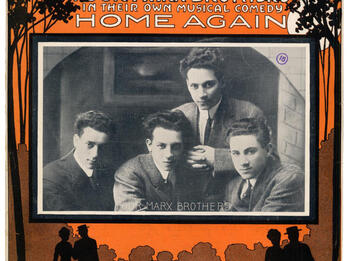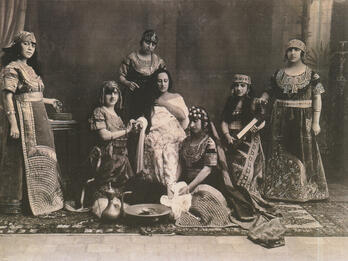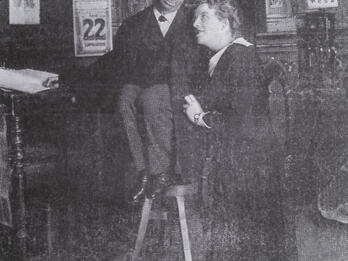Rigoletto in Yiddish: A Notable Triumph
We are becoming so accustomed to the remarkable enterprise of the authorities of the Temple, East End Jewry’s playhouse in Commercial Road, that we cease to wonder at anything they now attempt in order to entertain a fastidious public. But it was, however, with more than a feeling of indifference, that we accepted the invitation to witness the performance of “Rigoletto” last week. It was an ambitious project, this “doing into” Yiddish of Verdi’s greatest oper, and the successful accomplishment of so great a task reflects all the greater credit upon those who had undertaken it. Mr. S. Alman, the musical director, once again showed his remarkable versatility, for to him was entrusted the difficult work of translating the libretto into Yiddish, a work which was beset with no ordinary difficulties, but which he accomplished with surprisingly successful results. His version appeared to fit the musical accent admirably and to run easily.
This represents the first occasion upon which “Rigoletto” has been produced in the jargon, and little did Verdi imagine, when his work was first produced in Venice in 1851, that sixty-one years later it would delight the denizens of the East End in their own tongue. But such is the march of time, and all oper lovers in search of new and refreshing experiences may be recommended to pay a visit to the Yiddish theatre in our midst. That the production, from all points of view, was a notable one goes without saying, for we already know what talent is found among the stock company at the “Temple of Art,”1 and what a skilful batôn is wielded by the translator and composer of “King Ahaz.” As a contemporary remarks, “Rigoletto” cannot sound as well in Yiddish as in Italian. “Caro nome del mio cor” becomes “Oisgekritzt in main hartz.” But Mr. Alman, the composer-conductor, has evidently done his translation with poetical feeling and—as far as possible—with due consideration for vocal effect. To him and, no doubt, also to Mr. Winogradoff, the stage director, the performance owed its artistic style, its precision and forceful and captivating swing, and its dramatic sensitiveness. The drawback was the smallness of the orchestra and, to a lesser degree, that of the chorus. It is a mistake to think that the orchestral part in Verdi’s oper is of little importance. However, all honour to the leader and the members of the orchestra and chorus, and the capable and eager representatives of the various lesser rôles in the oper. [ . . . ]
Taking all things into consideration, it is hardly surprising that the general press are so enthusiastic over the production, and we cannot help culling the following from the Daily Chronicle, which in the course of its critique remarks:—“Nowhere, except in grand oper at Covent Garden, could one hear, in England, a company of such brilliant talent as in this Yiddish Theatre, in the very heart of the East End, which has been founded by the subscriptions of rich and poor Jews, and has been built to fulfil a great racial ideal among those people who have come from all parts of the world, refugees from persecution and direst poverty, to the Ghetto in London, where they are bound together by the same faith, the same tragic history, and by that mixed language spoken by all the Jews of Europe. The performance of ‘Rigoletto’ in Yiddish stands by itself as one of the most notable oper triumphs in this country. The libretto has been translated by Mr. S. Alman, the conductor, and the music, which is full of technical difficulties to any but the most highly trained singers and musicians, was performed both by the company and the orchestra, with an accuracy, a precision, and a perfect mastery, astonishing in its excellence.”
Notes
[The Temple of Art, or Feinman Yiddish People’s Theatre, in London’s East End.—Eds.]
Credits
Published in: The Posen Library of Jewish Culture and Civilization, vol. 7.





